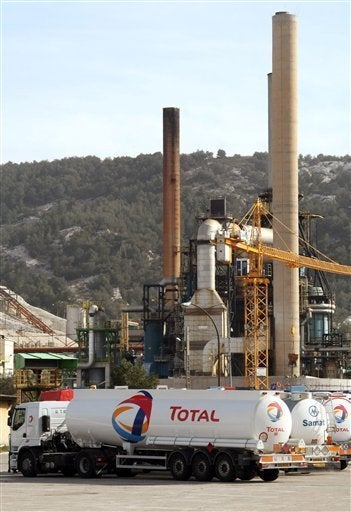
The Danish fjord town of Kalundborg was founded in 1170. A five-spired medieval red-brick church rises sharply against the sky from a nearby hillside.
And this location, however unexpected, is the birthplace of our collective industrial future.
Forty years ago, Kalundborg's Statoil refinery agreed to provide excess butane gas to neighboring Gyproc, a gypsum wallboard manufacturer, and to exchange water with the nearby power plant. As new industry moved in, this web of resource-sharing and by-product exchange expanded and densified; waste from one company became the feedstock for another. Emerging haphazardly was the now visible approach of industrial symbiosis, named in 1989 by Kalundborg's power plant manager, by analogy to the manner in which some species in nature cooperate to mutual advantage.
It turns out that industry, too, can cooperate quite effectively for mutual advantage.
From Brazilian shoe manufacturers to Japanese eco-towns to Chinese industrial parks, examples of industrial symbiosis today are rich and increasingly numerous. For the private sector, industrial symbiosis is a liberating and expansive new perspective that recognizes unexploited opportunity sitting in plain sight. As if peering through the looking glass, waste is no longer an unavoidable liability, but a potential asset: power plants might sell their coal ash to the cement industry; pharmaceutical manufacturers might offer their slurry outflow as fertilizer to farms in expanding networks. What was once expenditure becomes revenue; red becomes black.
Governments are also recognizing and promoting industrial symbiosis as a strategy to address mounting resource constraints. "Industrial symbiosis... needs to become widespread," declared Janez Potočnick, the E.U. Environment Commissioner, in a closing address at the largest annual environment conference in Europe. China's National Demonstration Eco-Industrial Park Program and, more broadly, the country's Circular Economy Promotion Law offer means of evaluating eco-industrial development in a wide range of industrial settings. Korea, too, has taken strong leadership in eco-industrial development through competitive grants programs and, most recently, through the national green growth program.
The symbiosis at Kalundborg took some 20 years to be recognized for the self-organized network it has become. It continues to evolve and grow, most recently with a move to replace some of the fossil energy that powers companies with locally grown biomass energy. Attempts to consciously plan comparable projects from scratch, however, have been less successful than those that evolve on their own like Kalundborg.
A key question is whether we can speed up the development of energy, water, and material sharing networks or whether they must go at their own pace based on business conditions. If businesses, however, can learn to see that they are leaving an opportunity on the table by not reusing resources, then there would be more potential for coordination.
The joke goes that two economists, a professor and student, are walking together when the student notices a $20 bill on the sidewalk. "That can't be," says her professor. "If there were $20 on the ground, somebody would already have picked it up."
But, to the student's credit, the ground appears littered with $20 bills, and picking them up is not just profit in-pocket, but litter removed from the environment. This is the essence of industrial symbiosis: gains in plain sight. Industry need only look closer, crouch lower.
For more information see the recently released special issue of Yale's Journal of Industrial Ecology, focused on the leading edge of theory and practice in industrial symbiosis.